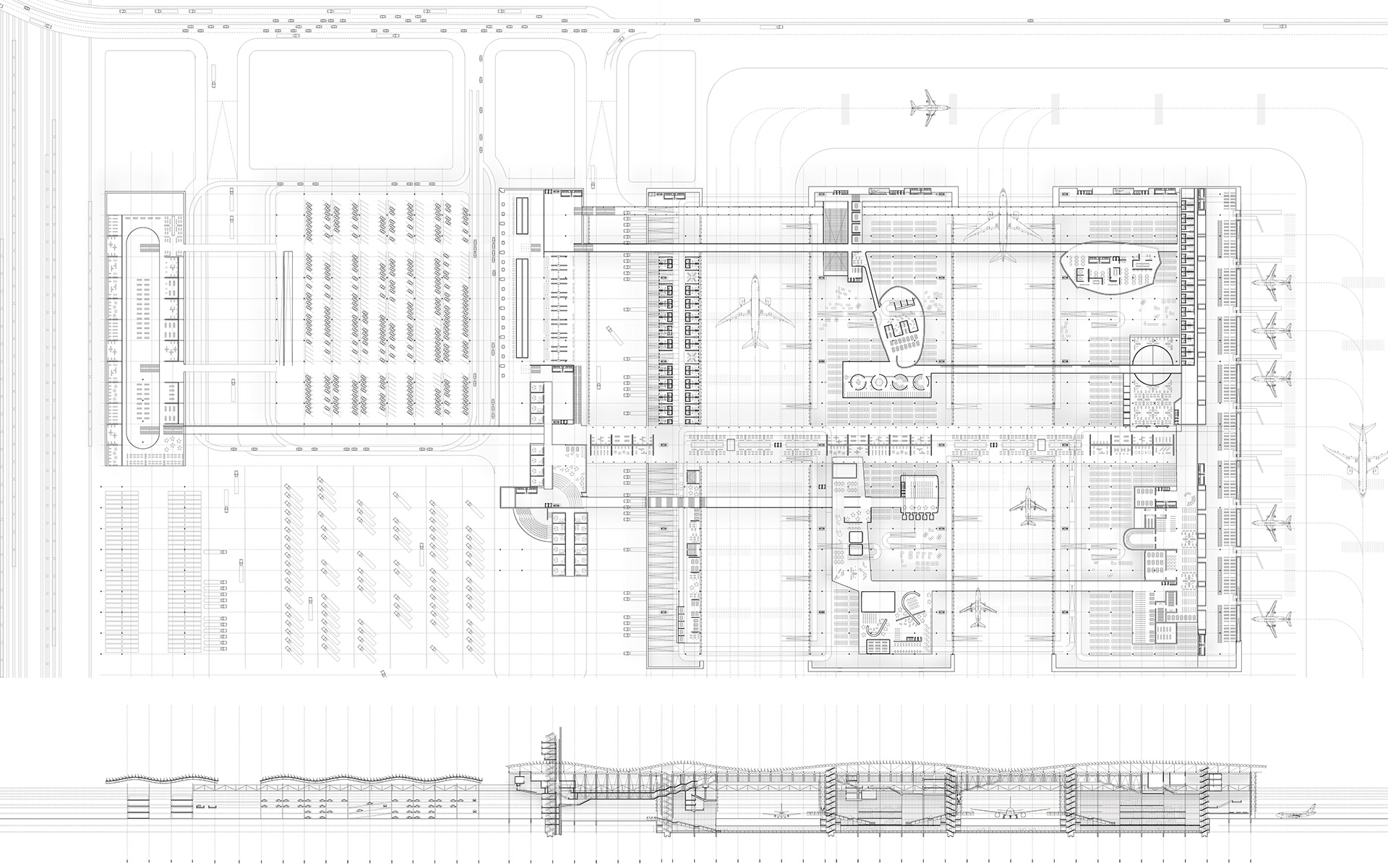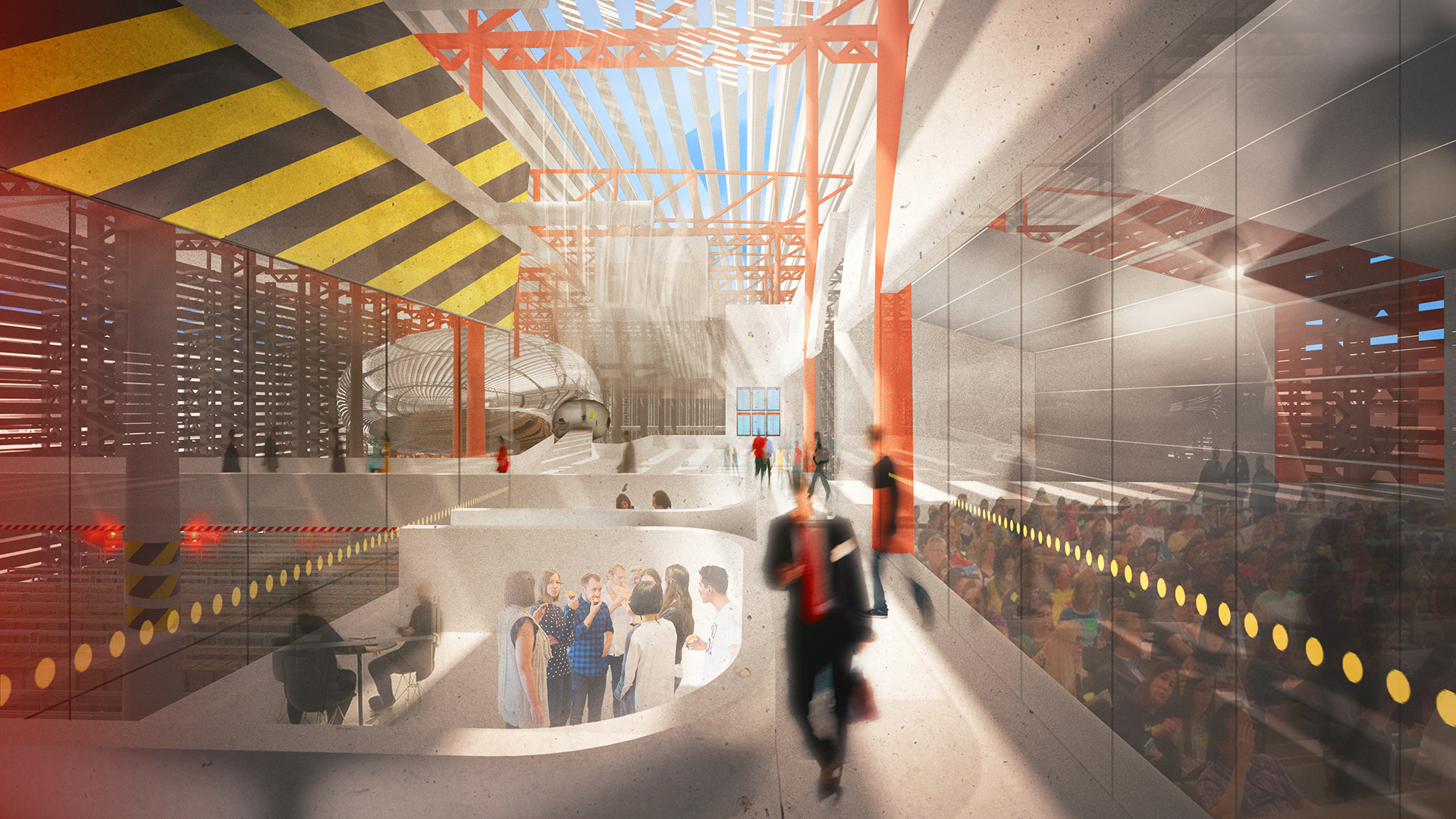︎︎
Free Trade Infrastructure: FUCIM

In collaboration with Aymar Marino-Maza
We are used to understanding migration as the physical movement of people from one place to another. But we live in a world of borders. The Trump administration promises to strengthen the border between the US and Mexico, through physical and economic barriers. Over the last four decades this border has been thickened by trade metropolises and industrial zones. This thickening is in part due to the maquiladora program, which was intended to mitigate unemployment in Mexico, has become a system of abuse particularly of women. Beyond the checkpoints that dot the border, a trade network extends the entire North American continent, called the NAFTA super corridor. This network has an expanded footprint of trucks, trains, ships, and planes, road, track, ports, and airports.
We are used to understanding migration as the physical movement of people from one place to another. But we live in a world of borders. The Trump administration promises to strengthen the border between the US and Mexico, through physical and economic barriers. Over the last four decades this border has been thickened by trade metropolises and industrial zones. This thickening is in part due to the maquiladora program, which was intended to mitigate unemployment in Mexico, has become a system of abuse particularly of women. Beyond the checkpoints that dot the border, a trade network extends the entire North American continent, called the NAFTA super corridor. This network has an expanded footprint of trucks, trains, ships, and planes, road, track, ports, and airports.


But the benefits of trade between the US and Mexico are not equal. Mexico can turn away from American dependency to international independence. Strengthening trade partnerships with China and the European Union. With hundreds of international companies, such as Bayer Corp, Ford, Samsung, IBM, Foxconn, dependent on the benefits of the maquila program for manufacturing, there is an untapped network of trade partners. Mexico can impose a new system of control over the way products produced in maquilas leave Mexico to make a better bargain on behalf of the Mexican worker. Maquilas can be incubators for a new type of Mexican employee, with a set of skills that go beyond manufacturing. The new agreement would demand that companies take part in a new institution, one that grants workers access to education and an international job market.
Mexico is well positioned to become a dominant international trade partner. Mexico currently ranks 64 of 148 countries in terms of infrastructure. By 2018, Mexico will spend 600 billion dollars over four years to improve its infrastructure. An investment in a new institution that inverts the free trade infrastructure to make a university-airport hybrid, can have a sustainable long-term impact. Just south of the US border, along Interstate 35, a major north south trucking corridor, Situated in Nuevo Laredo, the institution would link this trucking route with the train line and an international airport, all the while, preserving the moment of exchange within Mexico. Fabrica Universitaria de Comercio Internacional de Mexico (FUCIM) combines the commercial and freight airport with a university and broadcast center. As a hybrid of these different movements it monumentalizes the intersection of people, goods, and ideas. This institution is not another variant of the Free Zone, but new type of cosmopolitanism.







This work was completed as part of Keller Easterling's Spring 2017 advanced design studio: Free Migration
This work was selected for publication in Retrospecta 40
© 2024 Matthew Bohne — Brooklyn, New York